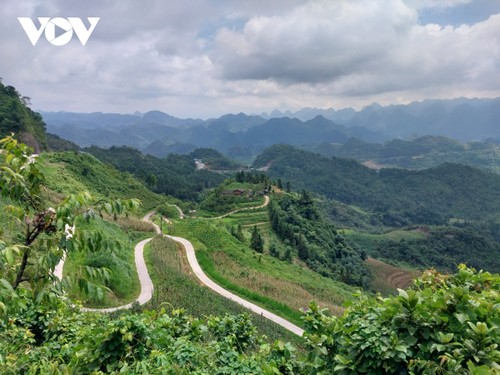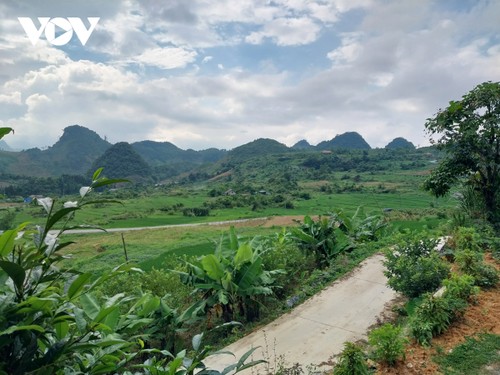 The well-protected forests in Quan Ba district, Ha Giang province. The well-protected forests in Quan Ba district, Ha Giang province.
|
Of the four mountain districts, Quan Ba, has the largest forest area, 26,000 hectares. Nearly 90% of which are protected forest where many families have lived for a long time. Since the locals were assigned to manage the forest, they have felt a greater sense of responsibility.
As the residents of Quyet Tien commune in Quan Ba district said deforestation is no longer happening in their hamlet in recent years. The locals are doing a good job and they all understand that protected forests can’t be cut down.
“My family has been assigned to manage dozens of hectares. Now I only go to the forest to get firewood. We need to protect the forest,” said Chao Thin Min, a Quyet Tien villager.
The revenue from forest environmental service fees is being used to pay for patrolling and protecting the forest and for repairing and upgrading village infrastructure. This has encouraged Quan Ba people, especially those in remote areas, to participate in forest protection.
Since 2018 Quyet Tien commune has successfully completed new-style rural building, with funding for many infrastructure works coming from the forest environmental service source.
Nguyen Van Tuan, Vice Chairman of the Quyet Tien commune People's Committee, said, “The hamlet forest patrol teams take turns making weekly inspection tours. Each hamlet has 1 or 2 teams who are financially supported. Although the amount of money is small, it helps to raise people’s awareness.”
Last year the Quan Ba Forest Protection Department disseminated the forest protection policies to more than 12,000 people in communes and towns. 10,000 households have signed commitments to forest protection.
In response to the Tree Planting Festival and the project to plant 1 billion trees between 2021 and 2025, Quan Ba’s administration has provided communes and towns 88,000 seedlings. Practical policies have been promulgated to help households convert inefficient crops to afforestation.
 A cement road built from the forest environmental service fund in Quyet Tien commune, Quan Ba district, Ha Giang province. A cement road built from the forest environmental service fund in Quyet Tien commune, Quan Ba district, Ha Giang province. |
Over the years, Ha Giang province has outlined specific programs to restore and develop forests in 4 karst plateau districts – Quan Ba, Yen Minh, Dong Van, and Meo Vac.
The efforts have contributed to recovering bare hills with green trees and ending the slash-and-burn practice. Forests are now better protected, and coverage has increased from nearly 40% in 2000 to 58.5% by the end of last year.
“Ha Giang’s people, especially those on the Dong Van karst plateau, have strictly abided by the policy and developed a greater sense of responsibility for forest protection which, they now know, will benefit them as well as the community,” said Dao Duy Tuan, Deputy Head of the Ha Giang Forest Protection Department.
He said that thanks to forest environmental service funding, living conditions and infrastructure have improved in Dong Van, Meo Vac, and Quan Ba district.
"The locals didn’t have to contribute any money, but they still have cement roads and spacious village offices,” said Tuan.
Good dissemination, policies, and programs have helped Ha Giang province protect and develop its forests. Forest coverage has steadily increased, especially in the 4 karst plateau districts.
In addition to solving social security issues, the programs and policies to support ethnic minorities have helped them stabilize their lives, and facilitate socio-economic development and poverty reduction toward maintaining national defense and security in the northern border region.